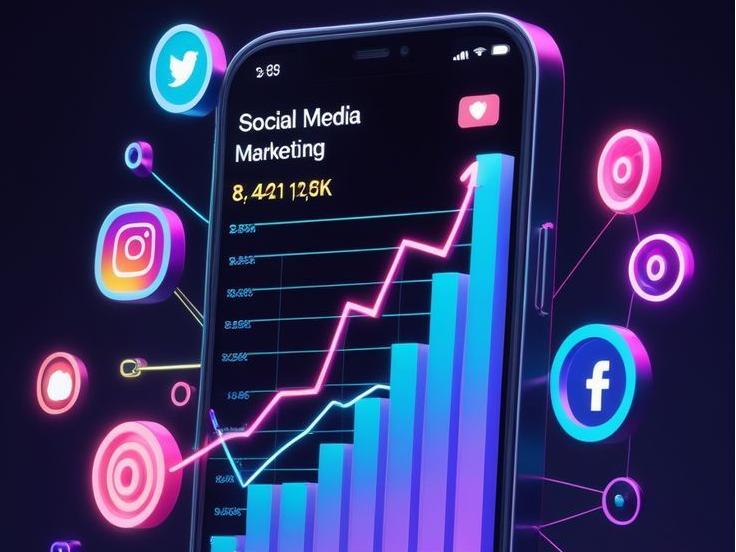In 2025, the digital marketing landscape is undergoing a critical shift—moving beyond simply chasing new leads to focusing on activating a brand’s most core supporters: fans. Today, the “fan economy” has proven to be a high-efficiency lever for driving business growth. By deeply engaging with this highly loyal community, brands can not only optimize marketing strategies and expand their reach but also convert fan enthusiasm into tangible business results. This article breaks down how to strategically manage fan groups, turning interactions into actions, followers into brand ambassadors, and marketing from mere “reach” to genuine “connection.”
1. Reimagining: The Core Value of Fan Marketing
Traditional digital marketing often prioritizes “reaching new users” as its core goal. However, 2025 market feedback shows that brands achieving real breakthroughs are those deeply investing in “activating existing fans.” Fans are not ordinary consumers—they are storytellers for the brand, advocates of its reputation, and even co-creators of its products. When fans form a personal emotional bond with a brand, they spontaneously spread its influence across social networks, creating a “authentic word-of-mouth momentum” that paid advertising can hardly replicate.
To unlock this momentum, brands must move beyond superficial engagement metrics like “likes” and “comments” to build emotional assets: fostering a sense of belonging that makes fans willing to actively represent the brand in daily life. For example, core fans of an outdoor brand might organize “brand-themed hiking events” and share photos with the brand logo on social platforms. The reach of such voluntary actions far surpasses that of brand-run hard ads.
2. Path Breakdown: From “Followers” to “Brand Ambassadors”
Converting passive “followers” into active “supporters” requires brands to act with clear, layered strategies:
Step 1: Understand Fans’ Core Needs
Use user profiling tools and community interviews to pinpoint why fans engage with the brand. Do they value practical product features (e.g., “safe materials for a baby brand”), align with the brand’s values (e.g., “sustainability for an eco-friendly brand”), or seek emotional resonance (e.g., “a sense of exclusivity for a niche brand”)? Also, analyze their content preferences—do they prefer short videos or in-depth articles? Only by addressing these needs can subsequent strategies hit the mark.
Step 2: Design an Exclusive Benefits System
Reward fan loyalty with differentiated perks to make them feel “valued”:
- Early access rights: Offer first dibs on new product trials to core fans, or even invite them to participate in “new product beta feedback.”
- Exclusive community benefits: Create private groups for high-tier fans, with regular exclusive events like founder live chats or industry expert shares.
- Sense of identity: Launch a “Fan Star” column to showcase stories of highly engaged fans on the brand’s website or social accounts, or customize branded merchandise for them.
These initiatives turn fans from “consumers” into “active promoters.” They will spontaneously share brand content and even recommend products to friends, forming a low-cost word-of-mouth chain.
3. Cornerstone of Trust: Data-Driven Personalized Engagement
In the era of the fan economy, “personalization” is no longer a “nice-to-have” but a “must-have” for building trust. Today, AI-powered tools (such as user behavior analytics systems and marketing automation platforms) allow brands to identify micro-segments within fan groups—e.g., “core fans with high purchase frequency,” “social-focused fans who love sharing,” and “co-creation-focused fans interested in product development”—and deliver tailored content to each segment.
Examples include:
- For “core fans”: Send “exclusive discount coupons + birthday care packages” to boost repeat purchases.
- For “social-focused fans”: Launch a “share brand stories for points” challenge to encourage content sharing.
- For “co-creation-focused fans”: Share “product improvement surveys” to invite feedback on new products.
The key is balance: When using data, brands must uphold ethical standards—clearly inform users how their data is used and respect their privacy choices. All personalization efforts should focus on “enhancing the fan experience,” not “controlling user behavior.” Only then can the trust of “this brand understands me” deepen over time.
4. Deep Engagement: Turning Fans into “Co-Creation Partners”
One of fans’ core needs is a sense of participation—a desire to be part of the brand’s growth, not just passive observers. Brands can activate this need through “co-creation initiatives,” turning fans from “audiences” into “participants”:
(1) Content Co-Creation
Launch “brand content collection” campaigns: A beauty brand might invite fans to shoot short videos of “creative makeup looks” using its products; a book brand could host a “fan book review contest.” Outstanding entries not only win prizes but are also shared by the brand’s official accounts or edited into compilations. This user-generated content (UGC) is more authentic than brand-created content and resonates more easily with other users.
(2) Product Co-Creation
Open “product development processes” to fans: A beverage brand might run a “new flavor vote” in its community, letting fans choose the next flagship drink from options like “peach oolong” or “grape cheese”; a clothing brand could invite core fans to join “fabric selection workshops” and adjust materials for autumn/winter collections based on their feedback. This “fans decide” model ensures products better match market needs while making fans feel “this is our brand.”
(3) Value Co-Creation
Invite fans to participate in brand charitable initiatives: An outdoor brand might launch a “fan charity hike,” donating a pair of hiking shoes to mountainous areas for every fan who completes a 10km hike. Fans can track donation progress in real time and even join donation ceremonies. This “value alignment” elevates the fan-brand connection from the “product level” to the “spiritual level,” significantly boosting loyalty.
5. AI & Automation: Enablers (Not Replacements) for Fan Engagement
Today, AI serves as an “invisible assistant” in digital marketing, playing a key role in fan engagement:
- AI chatbots provide 24/7 responses to common fan questions (e.g., order inquiries, after-sales support), solving the pain point of “no late-night replies.”
- Recommendation systems suggest relevant products based on fans’ browsing and purchase history (e.g., “New products similar to the XX item you viewed are now available”).
- Predictive analytics tools anticipate fans’ potential needs (e.g., “Based on your purchase cycle, you may need to restock XX product next month”).
However, a clear line must be drawn: Automation is meant to assist, not replace. Fans can easily tell the difference between “bot replies” and “human care.” For example, if a fan complains about a “product issue,” a bot’s “standard apology” will feel perfunctory, while a human agent’s “one-on-one solution + compensation package” resolves dissatisfaction.
The optimal strategy ahead is human-AI collaboration: Let AI handle repetitive, standardized tasks (e.g., data organization, basic inquiries) and free up human teams to focus on high-value tasks—crafting emotionally resonant content, responding to in-depth fan needs, and designing personalized engagement activities. This “technology + humanity” combination boosts efficiency while preserving emotional connections.
6. Multi-Platform Engagement: Meet Fans Where They Are
Modern fans spread their attention across multiple platforms: Some prefer Xiaohongshu (Little Red Book) for “authentic experience sharing,” others like Douyin for “short, creative clips,” some engage with Bilibili for “in-depth, professional content,” and others gather in Discord or WeChat communities for “deep conversations.” Each platform has its own “ecosystem rules.” To fully reach fans, brands cannot simply “cross-post” identical content—they must adapt strategies to fit each platform.
| Platform | Core Traits | Engagement Strategy Examples |
| Xiaohongshu | Focus on authentic reviews (graphic/short videos) | Post “fan product test” articles with practical tips (e.g., “3 makeup hacks for XX foundation”). |
| Douyin | Focus on short, creative clips & challenges | Create 15-second “fan creative challenges” (e.g., “DIY desserts with XX snacks”) and promote via hashtags. |
| Bilibili | Focus on professionalism & deep engagement | Release long-form “fan co-created product analysis” videos and host live Q&As to address fan questions. |
| Private Communities (e.g., WeChat/Discord) | Focus on belonging & deep conversations | Organize “fan online tea sessions” and invite the brand team to share stories behind new products. |
The core principle is consistent brand tone, platform-specific format. Regardless of the platform, the brand’s core values (e.g., “youthful & eco-friendly,” “professional & caring”) should remain consistent, but content formats must fit the platform’s user habits. This ensures fans feel a familiar brand presence across scenarios while keeping their interest alive through diverse content.
7. Measuring Results: Which “Authentic Metrics” Matter?
To optimize fan marketing strategies, brands must first choose the right “metrics”—moving beyond superficial data like “impressions” and “click-through rates” to focus on indicators that reflect “community health”:
- Engagement depth: Do fans actively comment, share, or even create UGC? (e.g., “Number of brand-related UGC pieces created by fans monthly,” “Average likes on UGC”).
- Fan retention rate: What percentage of fans active in the past 3 months remain engaged? (e.g., “Percentage of last month’s active fans who still interact this month”).
- Referral value: Number of new users brought in by fan shares and their conversion rates (e.g., “Number of friends invited to register by fans,” “First-purchase rate of referred users”).
- Sentiment trends: Use AI-powered sentiment analysis tools to track the ratio of positive, neutral, and negative fan opinions about the brand—identifying potential issues (e.g., rising negative feedback on a product line) or opportunities (e.g., strong fan demand for a type of event).
More importantly, proactively collect feedback: Use regular fan surveys, community interviews, and live Q&As to directly understand fans’ views on brand strategies. For example, “Which of our events do you enjoy most?” or “What improvements would you suggest for our membership benefits?” Only by adjusting strategies based on this “authentic feedback” can fan engagement remain aligned with fan needs.
8. Case Insights: Brands Excelling at Fan Engagement
Today, both international giants and local emerging brands are achieving breakthroughs through fan engagement. Their success stories offer valuable lessons:
Case 1: International Sports Brand – “Fans in Product Development”
The brand launched a “Fan Design Challenge,” inviting fans to submit sneaker color and pattern ideas. Winning designs were turned into limited-edition products, and designers received a “Brand Co-Creator” certificate and an invitation to the new product launch. Additionally, the brand established a “Fan Testing Group,” sending new products to members for feedback before launch to adjust comfort and functionality. Ultimately, the brand’s limited-edition “fan-designed” shoes sold out immediately, and core fan repeat purchase rates rose by 30%.
Case 2: Local Beverage Brand – “Fans Decide New Product Directions”
The brand ran a “new flavor vote” in its WeChat communities, offering 5 options (e.g., “lychee coconut,” “bayberry yogurt”). The most popular flavor became the next flagship product, and voting fans received “early tasting rights.” The brand also collected fan feedback on new product packaging—e.g., “hoping for more eco-friendly packaging” or “wanting cartoon-themed cup sleeves”—which directly shaped the final design. As a result, the new product sold over 1 million cups in its first week, and fan organic social shares increased by 50%.
These cases share a common thread: genuine participation. The brands did not treat fans as “passive audiences” but as “partners”—inviting them into the brand’s “value chain,” from content creation and product development to marketing. This “co-creation model” not only keeps brands closer to market needs but also fosters deep fan belonging, driving long-term loyalty.
9. Long-Term Mindset: The Ultimate Goal of Fan Engagement
Short-term marketing campaigns (e.g., a fan giveaway, a limited-time discount) may generate temporary buzz, but only “long-term relationship building” can cultivate true fan loyalty. Brands must establish consistent dialogue mechanisms to make fans feel “the brand is always here”:
- Value delivery: Send weekly “fan-exclusive newsletters” that share not just brand updates but also fan-relevant insights (e.g., an outdoor brand sharing “winter running warmth tips,” a beauty brand sharing “late-night skin rescue tutorials”).
- Regular engagement: Host monthly “fan online events,” such as live lectures (inviting industry experts to share knowledge) or creative workshops (e.g., “DIY crafts with brand merchandise”).
- Growth companionship: Launch a “Fan Growth Program” to offer fans learning and networking opportunities (e.g., a knowledge platform providing “content creation training” for core fans, a photography brand organizing “offline fan photography outings”).
The core is to provide value beyond marketing. Fans follow a brand not just for its products but also because the brand meets their other needs—learning, socializing, emotional resonance. When a brand consistently delivers “non-transactional value,” it builds a “trust-based fan ecosystem”: one that grows organically (fans invite friends to join) and even defends the brand during crises (e.g., negative public opinion), becoming the brand’s “moat.”
10. 2025 and Beyond: Trends in Fan-Driven Marketing
Looking ahead to 2025 and beyond, “fan-driven marketing” will be the cornerstone of digital marketing. Three trends deserve attention:
(1) Deeper Precision with AI-Powered Insights
As AI technology advances, brands will move from “behavioral-level” to “psychological-level” fan insights. For example, AI can analyze fans’ social comments and browsing history to identify hidden needs (e.g., “A fan frequently viewing ‘family travel’ content may need family outdoor gear”) or even anticipate emotional shifts (e.g., “A fan complaining about ‘work stress’ could receive warm messaging for ‘stress-relief products’”).
(2) Emotional Connection as a Core Competitive Advantage
In an era of information overload, users are increasingly immune to “hard ads.” Only brands that trigger emotional resonance will stand out. Future fan marketing will focus more on “storytelling-driven communication”—sharing shared experiences between the brand and fans, or conveying the brand’s humanistic care—making fans feel “this brand doesn’t just sell products; it understands and accompanies me.”
(3) Expanded Scope of Co-Creation
Future fan co-creation will extend beyond “content and products” to “brand values.” For example, brands may invite fans to co-design charitable programs (“Which causes should we focus on this year?”) or annual brand themes (“What should our core communication theme be next year?”). This “deep co-creation” will strengthen the fan-brand bond, forming a “shared success community.”
Conclusion
Digital marketing in 2025 is no longer about “who shouts loudest wins”—it’s about “who understands and connects with fans wins sustainable growth.” The core of the fan economy is not “using fans” but “coexisting with fans”: building trust through emotional connections, enhancing experiences through personalized engagement, and turning fans into the brand’s “core engine” via co-creation.
Ultimately, effective fan marketing is about making every fan feel “this brand is worth supporting” and turning every interaction into a “mutual commitment between brands and fans.” When a brand truly treats fans as “partners,” business growth will follow naturally.



